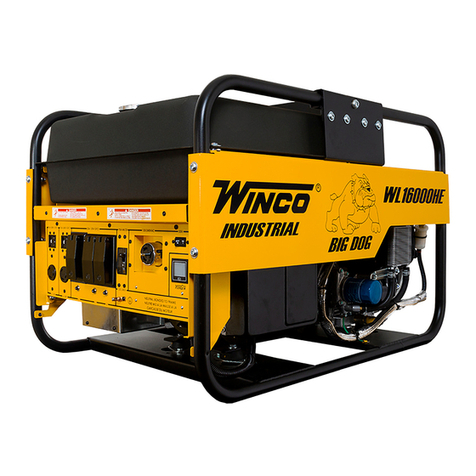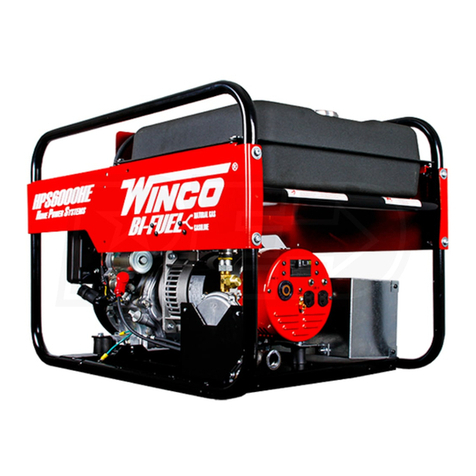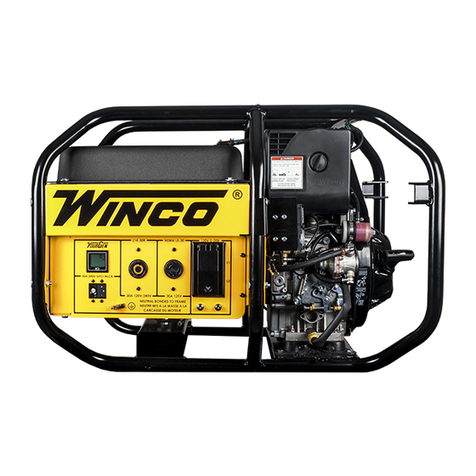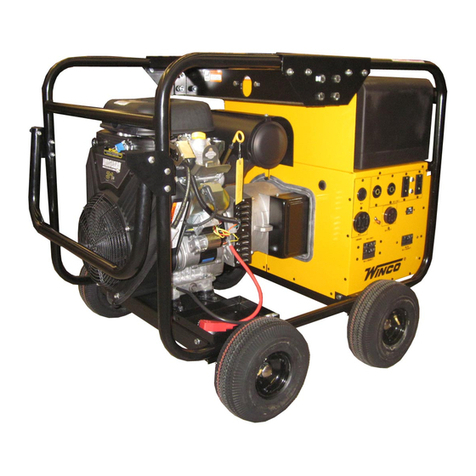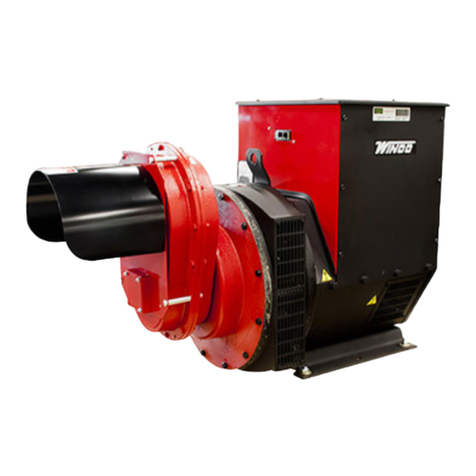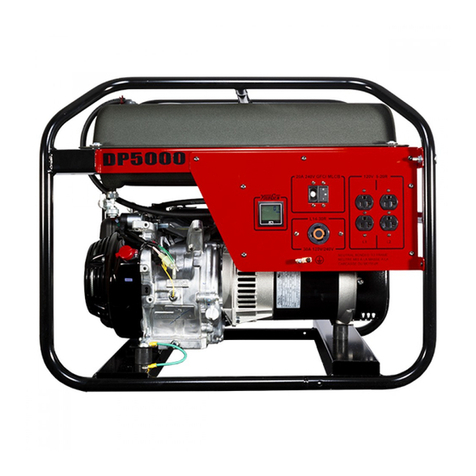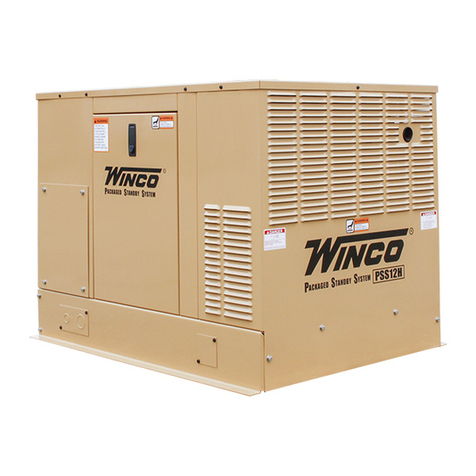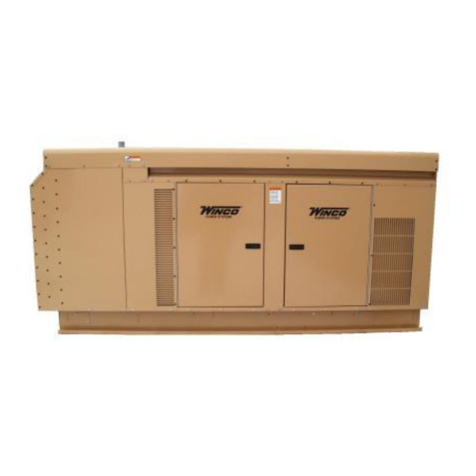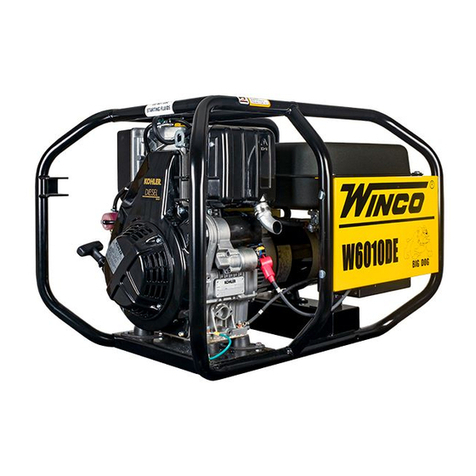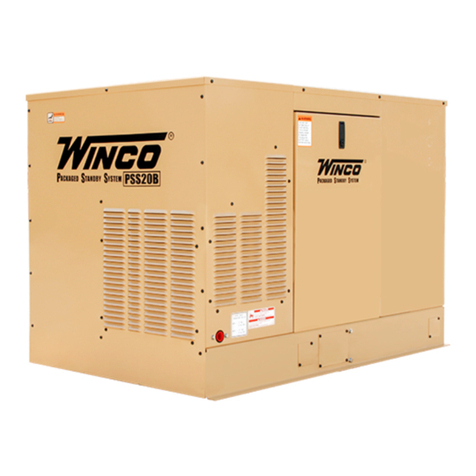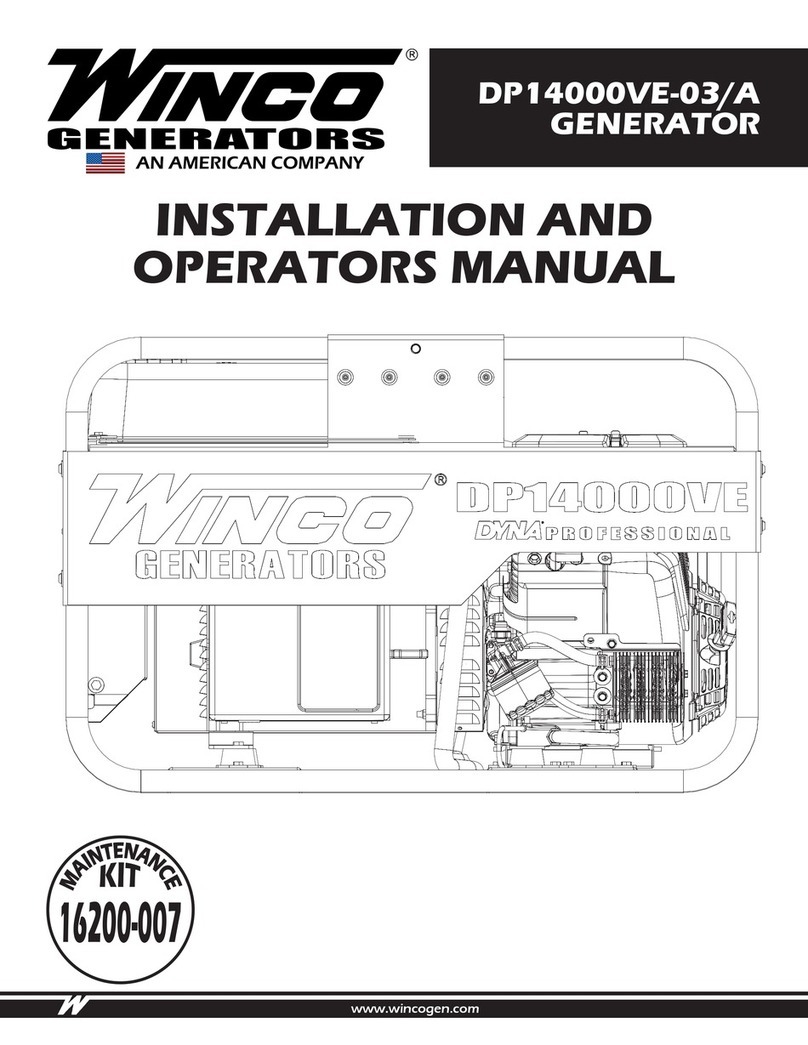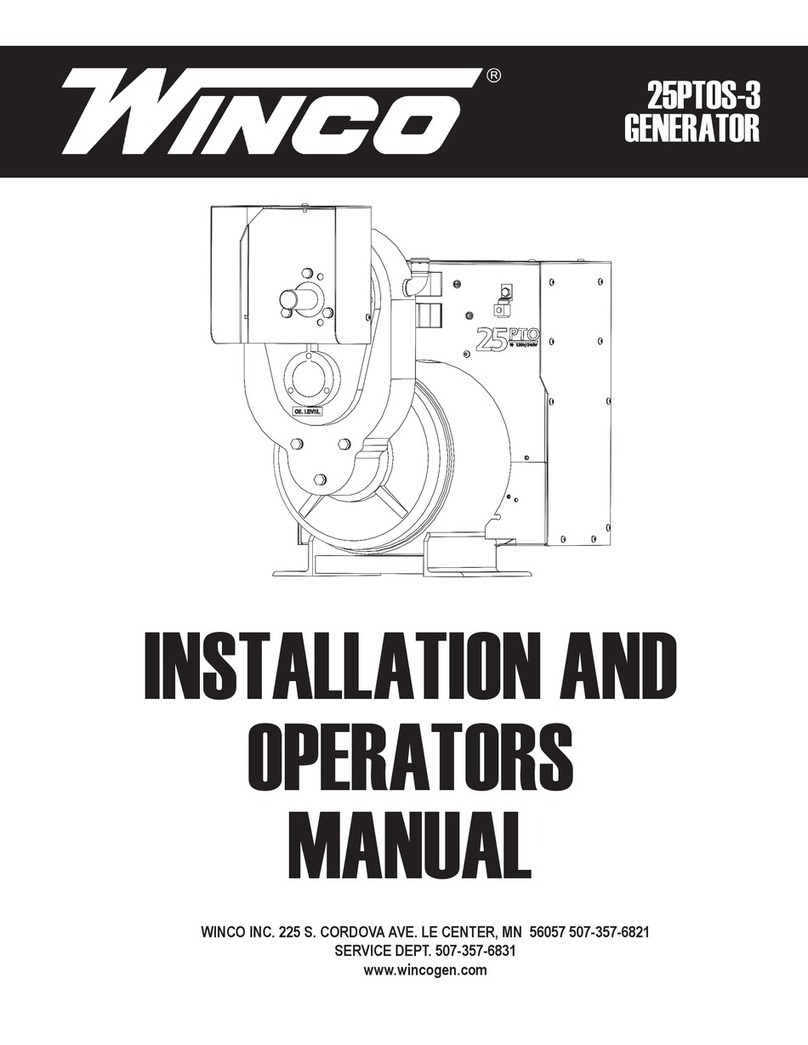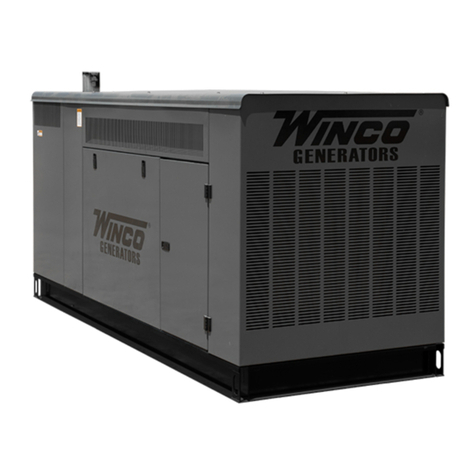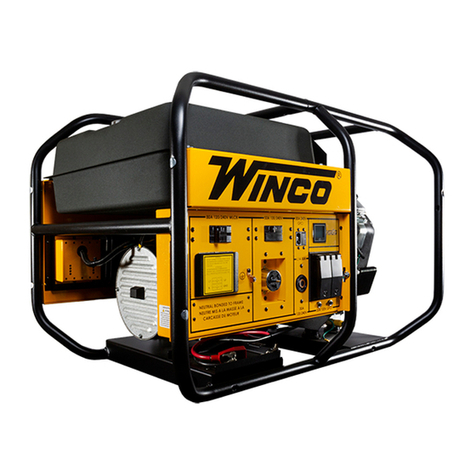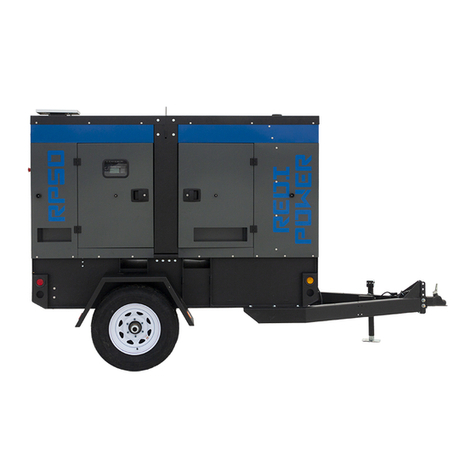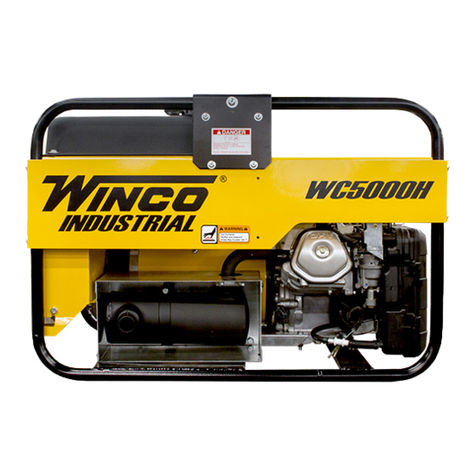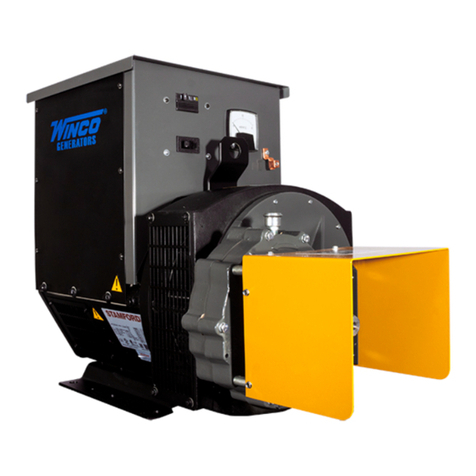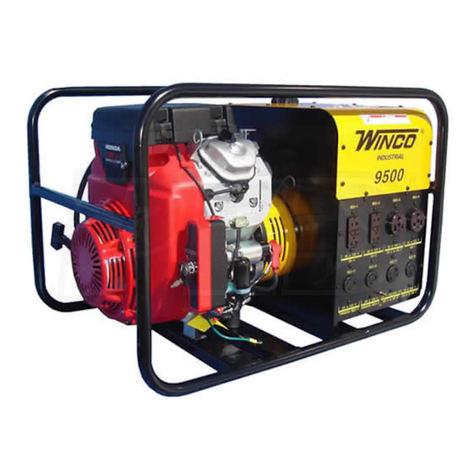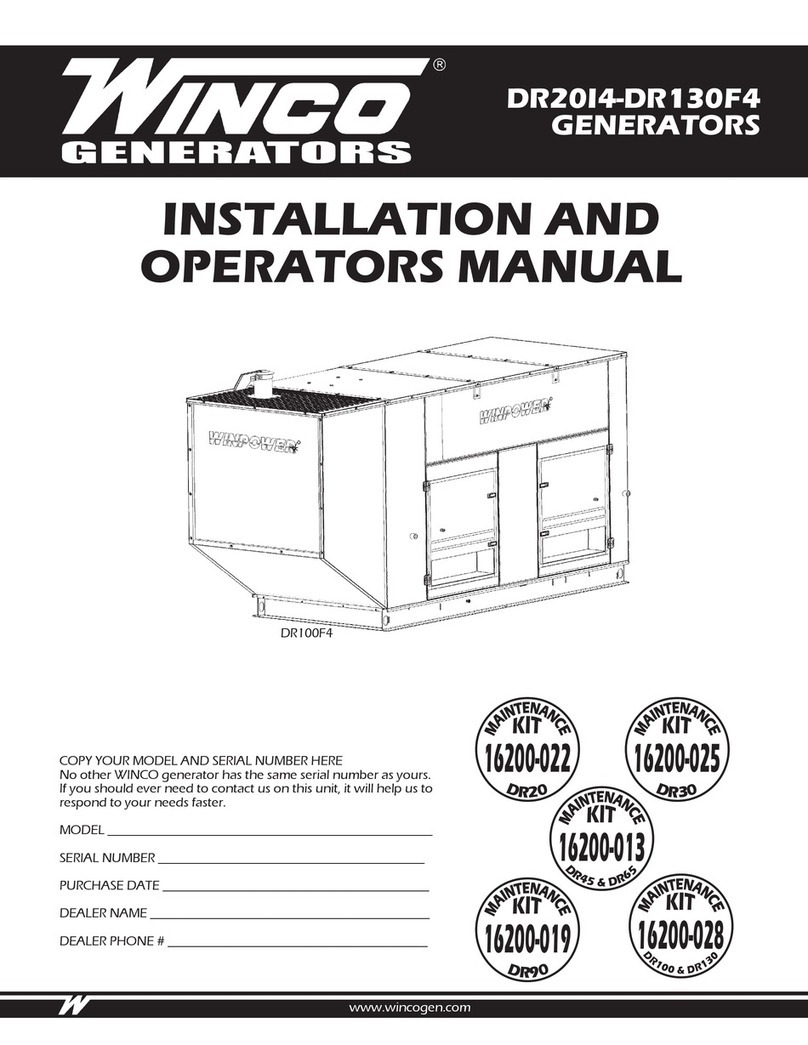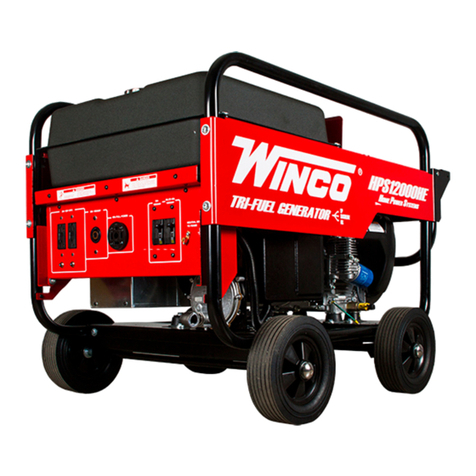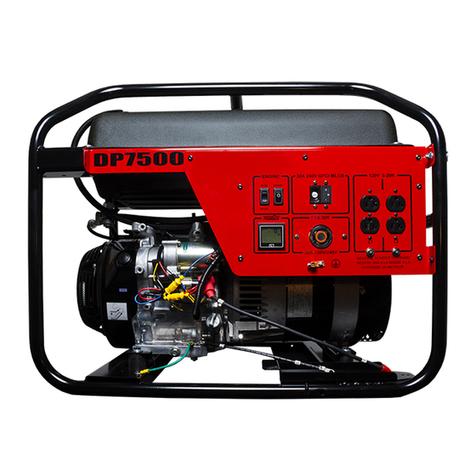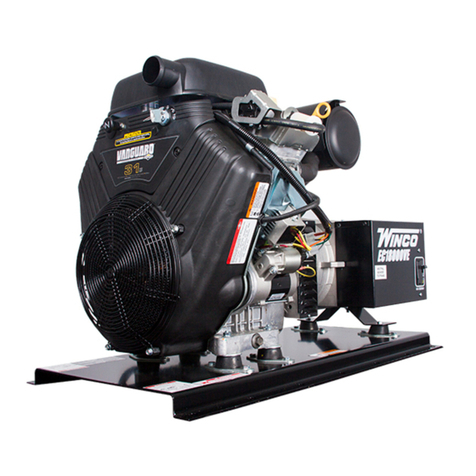
5
12095-10 60706-230
PREPARING THE UNIT
UNPACKING
CAUTION: EQUIPMENT DAMAGE
When you unpack your new generator be sure to
remove all the information sheets and manuals from
the carton.
1. This generator was in good order when shipped.
Inspect the generator-set promptly after receiving
it. If any damage is noted, notify the transportation
company immediately; request proper procedures
forlinga“concealeddamage”claim.Titletothe
equipmentandresponsibilityforlingaclaimrests
with you when a generator-set is sent F.O.B. ship-
pingpoint.Onlyyoucanlegallyleaclaim.
2. Before proceeding with the preparations of
your new generator for operation, take a couple of
minutes to insure the unit you have received is the
correctmodelandreviewthespecicationpagesin
this manual to insure that this unit meets your job
requirements.
UNIT INSTALLATION
CAUTION: EQUIPMENT DAMAGE
Before proceeding with the installation, be sure
that you have completely read and understood the
assembly and installation instructions.
An engine with adequate horsepower and a close
regulated(xedspeed)governorisrequiredforsat-
isfactory operation of this generator.
About 1.4 horsepower is required to produce each
1,000 watts of generator output power assuming
100%efciencyofboththeengineandthegenera-
tor.However,duetoengineandgeneratorefcien-
cies of 80 to 90%, the loss of power due to engine
driving accessories such as cooling fans, battery
charging alternators, etc., friction losses and slip-
page in the drive pulleys and belts, the general
conservative rule of thumb allowing approximately
two (2) horsepower for every 1,000 watts of genera-
tor output is much more realistic. For example, this
2,000 watt generator output will require a 4 or 5 H.P.
engine for full output, good speed/voltage regulation,
and satisfactory load performance. When determin-
ing the prime mover/generator pulley ratio to drive
the generator at the correct operating speed, bear
in mind that the power rating of most prime mov-
ers (usually an engine) varies with the speed. It
produces more power at higher speeds, less when
slowed. The prime mover must be run fast enough
to reach the desired horsepower for good generator
operation.
The drive belt system must be of adequate size and
must be tight enough to power the generator without
slippage. Be careful not to overtighten to the extent
that it puts excessive strain on the bearings. Do-
ing so can cause bearing failure and other possible
damage to the generator.
Alignment of the generator to the prime mover is
important. Misalignment of the pulleys will cause ex-
cessive belt and pulley wear and unnecessary stress
on the prime mover.
The following table shows the effect of various op-
erating speeds and electrical loads on a typical gen-
erator when matched and mounted to an adequate
prime mover.
Although individual units and models may vary
slightly, the normal voltage and frequency of typical
60 cycle engine-driven generators described in this
manual are approximately as follows when powered
byatypicalprimemover(engine)runrstwithno
load applied, then at half the generator capacity and
nallywhenloadedtoitsfullcapacityasratedonthe
nameplate.
LOAD VS. OUTPUT
Generator
Load Applied*
Speed
(RPM)
Fre-
quency
(Hz)
Voltage
(Cold)
None 3690 61.5 129V
Half 3600 60.0 120V
Full 3510 58.5 115V
* NOTE: Required generator speed must be main-
tained at 3600 +/- 90 RPM under all load conditions.
All engines have a tendency to slow down when
a load is applied. The governor on the engine is
designed to hold the engine speed nearly constant.
When the electrical load connected to the genera-
tor is increased, the engine is more heavily loaded
and as a result the speed drops slightly. This slight
decrease in speed together with the natural “voltage
drop” within the generator itself due to load current
and heating of the windings, results in a slightly
lower voltage than when the generator is running
idle.
